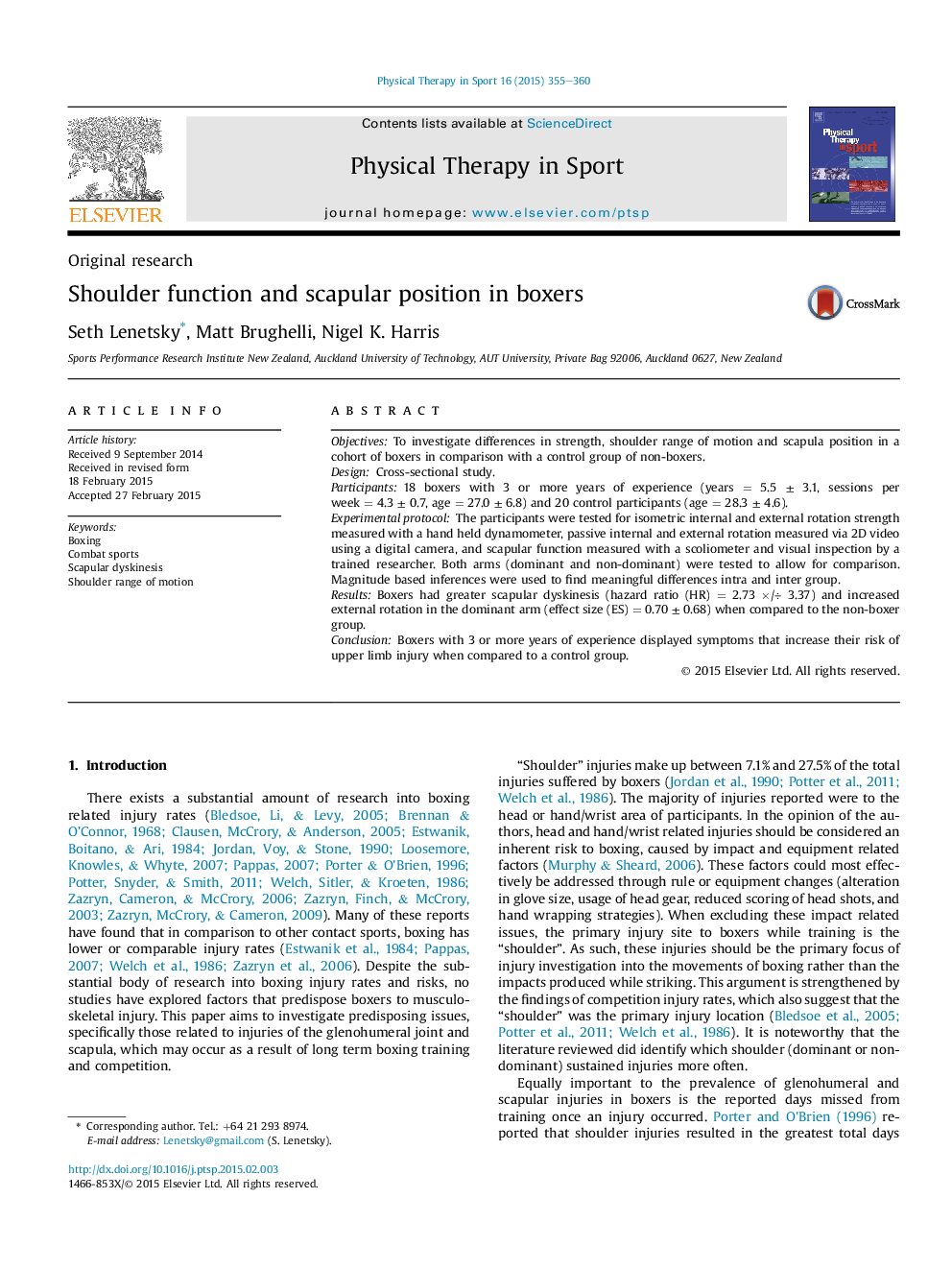| Article ID | Journal | Published Year | Pages | File Type |
|---|---|---|---|---|
| 2705757 | Physical Therapy in Sport | 2015 | 6 Pages |
•We compared shoulder and scapular function in a boxing and control group.•We used similar testing protocols to that used with overhead throwing athletes.•Our findings indicate that boxers display issues seen in overhead throwing athletes.•We recommend that those working with boxers should monitor them for potential issues.
ObjectivesTo investigate differences in strength, shoulder range of motion and scapula position in a cohort of boxers in comparison with a control group of non-boxers.DesignCross-sectional study.Participants18 boxers with 3 or more years of experience (years = 5.5 ± 3.1, sessions per week = 4.3 ± 0.7, age = 27.0 ± 6.8) and 20 control participants (age = 28.3 ± 4.6).Experimental protocolThe participants were tested for isometric internal and external rotation strength measured with a hand held dynamometer, passive internal and external rotation measured via 2D video using a digital camera, and scapular function measured with a scoliometer and visual inspection by a trained researcher. Both arms (dominant and non-dominant) were tested to allow for comparison. Magnitude based inferences were used to find meaningful differences intra and inter group.ResultsBoxers had greater scapular dyskinesis (hazard ratio (HR) = 2.73 ×/÷ 3.37) and increased external rotation in the dominant arm (effect size (ES) = 0.70 ± 0.68) when compared to the non-boxer group.ConclusionBoxers with 3 or more years of experience displayed symptoms that increase their risk of upper limb injury when compared to a control group.
